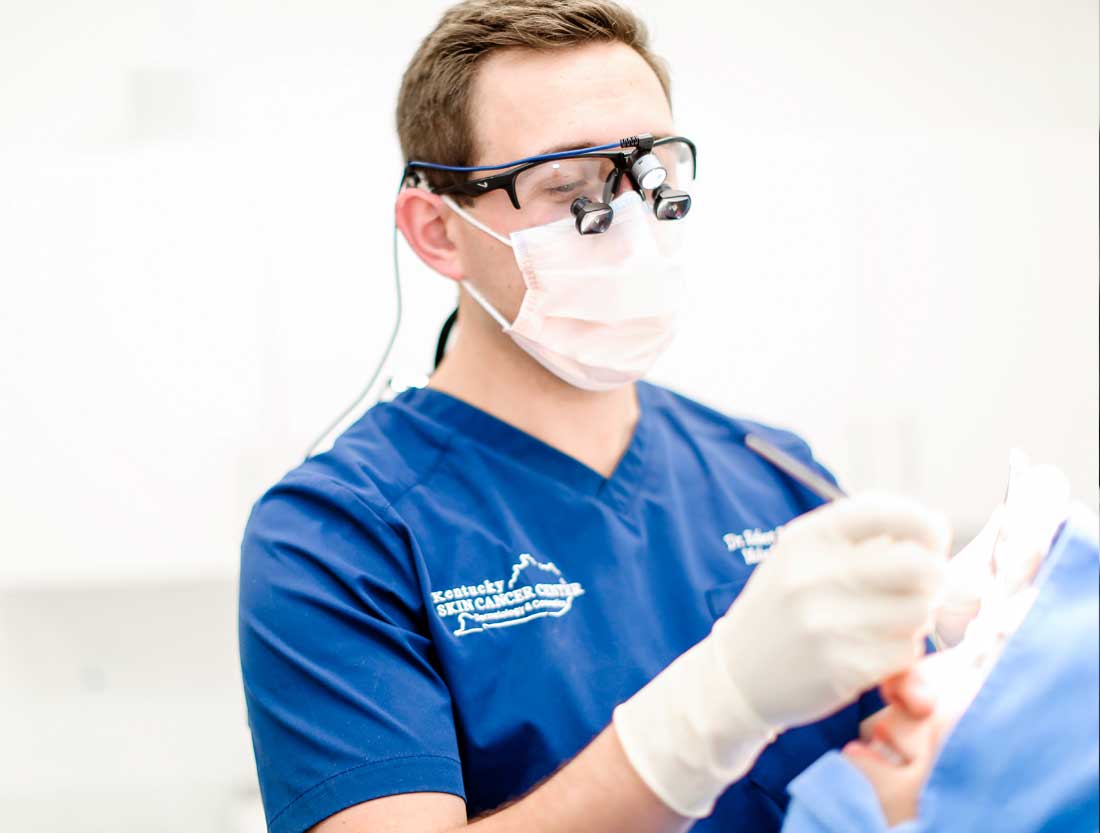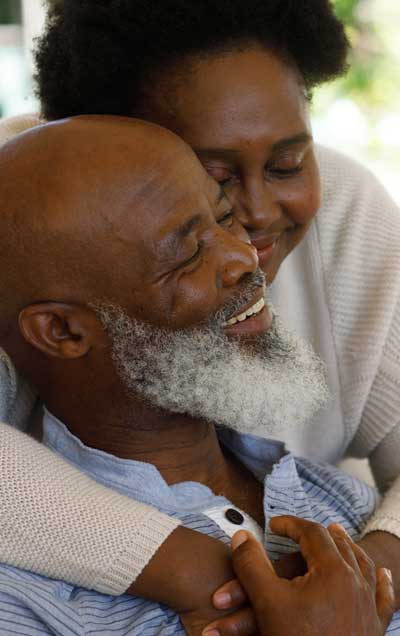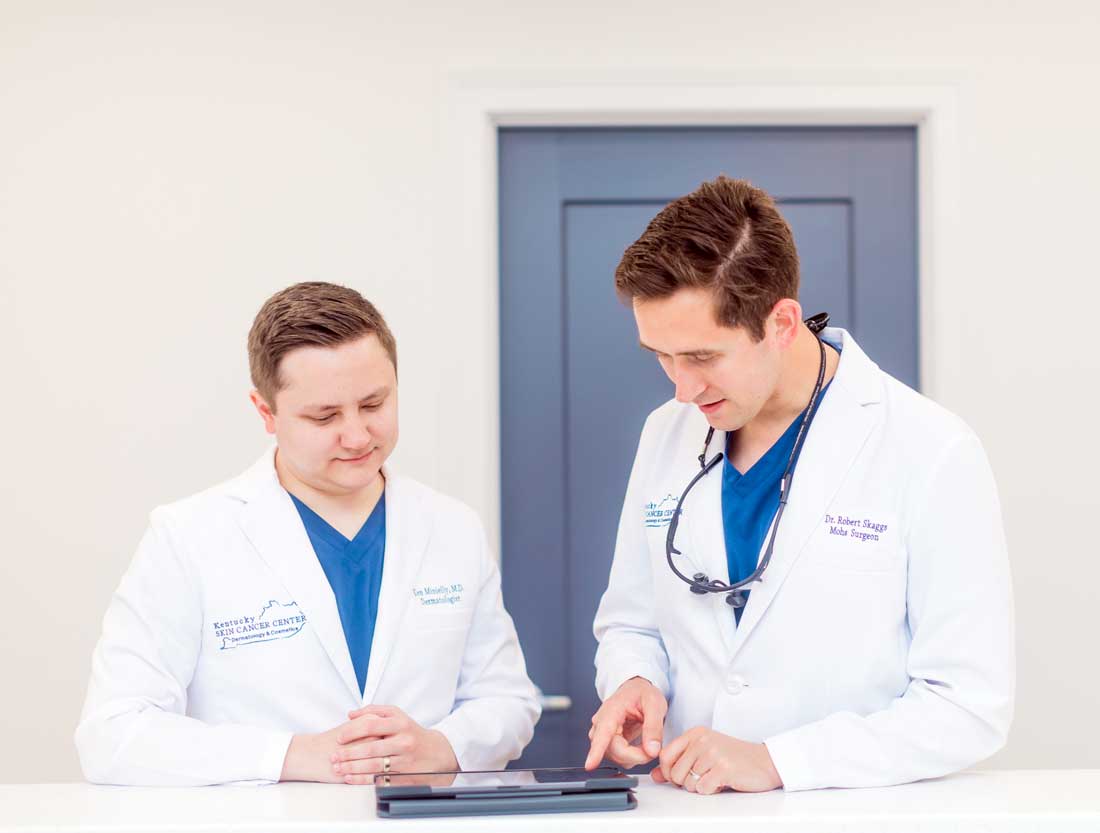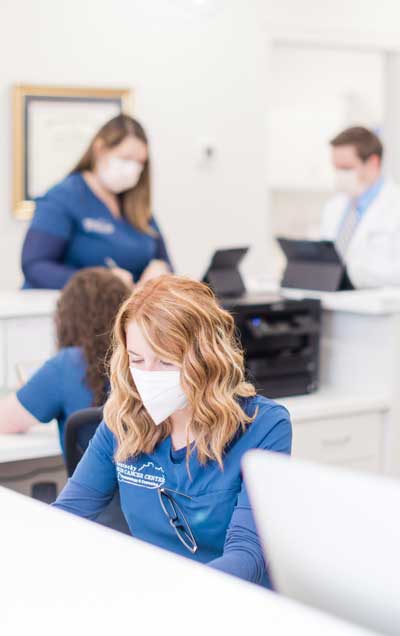After surgery to remove skin cancer, looking and feeling like yourself again is important. Kentucky Skin Cancer Center founder Robert Skaggs, MD, FAAD, is a Mohs Micrographic Surgeon who can remove your cancerous lesions using the least invasive techniques available. Dr. Skaggs also has extensive training in facial reconstruction. So after the tumor is removed, he can return your face to its natural ideal appearance with sophisticated facial reconstruction surgery techniques. Call the office to arrange an appointment at the Bowling Green, Owensboro or Franklin, Kentucky, office today.


Facial reconstruction is a type of surgery performed after damage, injury, or cancer surgery. In this kind of surgery, Dr. Skaggs performs surgical corrections that return your face to its original appearance. During his Mohs Micrographic surgery fellowship, Dr. Skaggs trained extensively with facial plastic and reconstructive surgeons as well as oculoplastic (eye area) reconstructive surgeons.
This experience means that he’s perfectly suited not only to remove skin cancer but also to restore your face to full cosmetic appearance and functionality.
Many patients who have skin cancer have Mohs Micrographic surgery to remove the cancerous tissue.
Mohs surgery removes only the necessary tissue, which is why it’s the preferred option wherever possible. In some cases, Dr. Skaggs still needs to remove a significant amount of skin to get all of the cancer out of your body.
This means that after Mohs surgery, there can be a prominent hole in your face. Although the surgery site will heal over time, there might still be a significant change in your appearance afterward.
Achieving the best cosmetic result is the most important objective in facial reconstructive surgery. By repairing the damage caused by cancer, returning your face to the way it looked before and solving any functionality problems that the cancer may have caused, the team hopes to give their patients the best possible results.


Every surgery is different because it’s always based on unique patient needs. Many reconstructive surgeries include flap surgery, in which Dr. Skaggs takes a piece of skin that’s attached to a major artery or vein and moves it to cover a hole or depression in your face after the skin cancer has been removed.
There are many other surgical options for reconstructive surgery, including cartilage grafting, and skin grafting. Dr. Skaggs will design the right surgical plan to give you the optimal outcome.
After your Mohs Micrographic surgery, Dr. Skaggs will design the ideal facial reconstructive surgery plan for you. Your surgery will occur immediately after the Mohs procedure, which means it’s especially vital to follow all the Mohs surgery preparation guidelines.
This includes avoiding an extensive list of medications and herbs. Also, stop drinking alcohol at least three days before your scheduled surgery. Dr. Skaggs will help you prepare in the best way.
Call the Kentucky Skin Cancer Center location nearest you to book an appointment today.

Facial reconstruction is a type of surgery performed after damage, injury, or cancer surgery. In this kind of surgery, Dr. Skaggs performs surgical corrections that return your face to its original appearance. During his Mohs Micrographic surgery fellowship, Dr. Skaggs trained extensively with facial plastic and reconstructive surgeons as well as oculoplastic (eye area) reconstructive surgeons.
This experience means that he’s perfectly suited not only to remove skin cancer but also to restore your face to full cosmetic appearance and functionality.
Many patients who have skin cancer have Mohs Micrographic surgery to remove the cancerous tissue.
Mohs surgery removes only the necessary tissue, which is why it’s the preferred option wherever possible. In some cases, Dr. Skaggs still needs to remove a significant amount of skin to get all of the cancer out of your body.
This means that after Mohs surgery, there can be a prominent hole in your face. Although the surgery site will heal over time, there might still be a significant change in your appearance afterward.
Achieving the best cosmetic result is the most important objective in facial reconstructive surgery. By repairing the damage caused by cancer, returning your face to the way it looked before and solving any functionality problems that the cancer may have caused, the team hopes to give their patients the best possible results.
Every surgery is different because it’s always based on unique patient needs. Many reconstructive surgeries include flap surgery, in which Dr. Skaggs takes a piece of skin that’s attached to a major artery or vein and moves it to cover a hole or depression in your face after the skin cancer has been removed.
There are many other surgical options for reconstructive surgery, including cartilage grafting, and skin grafting. Dr. Skaggs will design the right surgical plan to give you the optimal outcome.
After your Mohs Micrographic surgery, Dr. Skaggs will design the ideal facial reconstructive surgery plan for you. Your surgery will occur immediately after the Mohs procedure, which means it’s especially vital to follow all the Mohs surgery preparation guidelines.
This includes avoiding an extensive list of medications and herbs. Also, stop drinking alcohol at least three days before your scheduled surgery. Dr. Skaggs will help you prepare in the best way.
Call the Kentucky Skin Cancer Center location nearest you to book an appointment today.
Related Services
Your Trusted Skin Cancer Experts
Ask our team today how we can help you have the healthy skin you deserve!
The Kentucky Skin Cancer Center is a comprehensive dermatology practice offering the best in surgical dermatology, general dermatology, pediatric dermatology, and cosmetic dermatology.